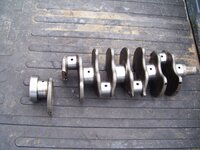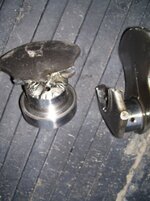keltalon
Supporting VIP
- 3,474
- 959
- Jun 29, 2003
-
Luthersville Ga, Atlanta,
Georgia
what do you think caused this crankshaft to break like this. by the way it was a remanufactored could it have been vibration of some sort?
could it have been vibration of some sort?
oh yeah forgot it came out of my car. maybe remans can't handle 300 plus horsepower
 could it have been vibration of some sort?
could it have been vibration of some sort?oh yeah forgot it came out of my car. maybe remans can't handle 300 plus horsepower





















